Does your back feel stiff? Read on to find out how you can improve your thoracic mobility…
Our daily habits make us very prone to stiffness in the thoracic spine, which often makes it hard to stretch, bend or flex your spine, and can lead to back pain and tension. We spend a great deal of time through the day in thoracic flexion (forward bending) e.g. when showering, sitting at a desk, looking at our phone, preparing food, eating, doing housework, etc.
Unfortunately, our usual daily routines rarely require us to extend our thoracic spine so, unless we go out of our way to do otherwise, we are often stuck in a forward position. Over time this leads to a fixed flexion posture and can be hard to reverse. It becomes especially hard to reverse as we age and, if not addressed, often leads to a great deal of debilitation in later life.
Poor thoracic mobility can also have flow-on affects into the neck, shoulders and lower back. With our thoracic spine in a flexed position, we are more likely to overload the neck muscles, impinge the shoulder joints and place more pressure on our lower back, especially when sitting through the day. Natural movement, combined with joint mobilising exercises for the thoracic spine can help offset poor habits and help us to improve overall posture and prevent movement restriction later in life.
The following exercises can almost all be done with no equipment, with a couple of exercises only requiring a foam roller and a broomstick.
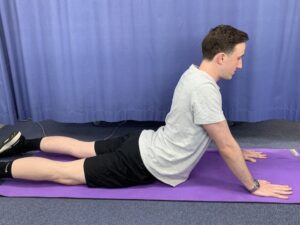 1. Cobra pose
1. Cobra pose
Start lying face down with toes pointed and hands on the floor underneath your shoulders. Push up through your arms and extend spine as far as you can, ensuring you also lift your head and look straight ahead. You can lock out your elbows if able, otherwise if this feels too extreme you can rest on your forearms. Hold this position for 10 seconds before returning to the starting position. The aim here is to get as much extension through the spine as possible. Repeat 5 times and remember to keep breathing as you stretch.
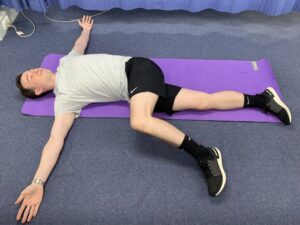 2. Archer stretch
2. Archer stretch
Lie on your side with your hips and knees bent to 90 degrees, keep your knees together as you arc your top arm up towards the ceiling and continue all the way around onto the floor. Hold for 10 seconds and repeat 5 times. The aim here is to get as much rotation through the spine as possible. Do the same lying on the other side.
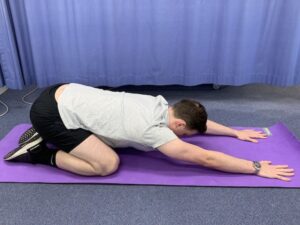 3. Child’s pose
3. Child’s pose
Get on your hands and knees, drop your bottom back onto your heels while keeping your palms firmly planted on the floor. Let your head drop between your arms and push your chest to the floor. Hold for 30 seconds and repeat 3 times. You can get a wider stretch by pushing your knees out to the sides so your legs form a V.
4. Cat cow stretch
Get on all-fours with your hands directly below your shoulders and knees directly below your hips. Alternate between arching and curling the spine. The aim here is to move your spine through its full range of motion in each direction. Repeat 10 times in each direction.
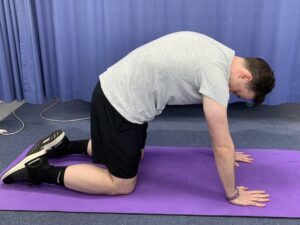

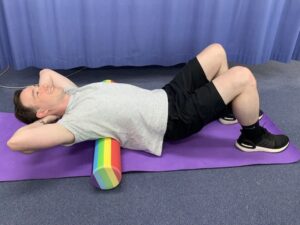 5. Roller Thoracic extension
5. Roller Thoracic extension
Lying down on a foam roller, with the roller sideways underneath your body, extend back over the roller as far as your feel comfortable. Roll up and down trying to extend the spinal segment above the roller as much as possible. If this feels too intense or uncomfortable you may want to work on the cobra stretch more until you gain more mobility.
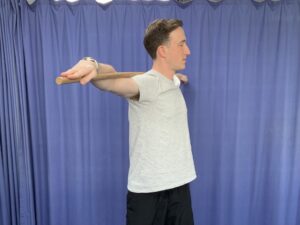 6. Thoracic rotation with stick
6. Thoracic rotation with stick
Rest broomstick on shoulders and place hands on top of stick at each end. Rotate the spine to the side as far as possible, trying to point the stick to 12 o’clock if able, hold for 5 seconds. Repeat 10 times in each direction.
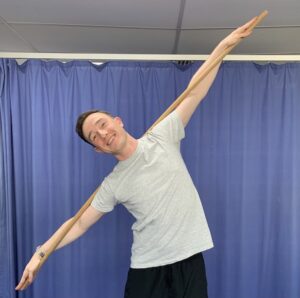 7. Thoracic side bends with stick
7. Thoracic side bends with stick
Rest broomstick on shoulders and place hands on top of stick at each end. Bent to the side through the spine, trying to point the stick down towards the floor as far as possible, hold for 5 seconds. Repeat 10 times in each direction.
If you’re struggling with back pain, stiffness or just want to help your body grow stronger and healthier, call or book online to have an appointment with a member of our team today.
This post was written by Greg Holmes, Physiotherapist at Stafford Physiotherapy and Pilates.
 Juhi, Matt and Sandra recently undertook the GLA:D® – “Good Life with osteoArthritis: Denmark” course and are now certified GLA:D® physiotherapists. We will soon be launching our in-house GLA:D® Program – a 6 week program of education and exercise designed to help reduce the symptoms of hip and/or knee osteoarthritis. Over the 6 weeks patients will attend 2 education sessions and 12 supervised exercise sessions, each of about 60 minutes.
Juhi, Matt and Sandra recently undertook the GLA:D® – “Good Life with osteoArthritis: Denmark” course and are now certified GLA:D® physiotherapists. We will soon be launching our in-house GLA:D® Program – a 6 week program of education and exercise designed to help reduce the symptoms of hip and/or knee osteoarthritis. Over the 6 weeks patients will attend 2 education sessions and 12 supervised exercise sessions, each of about 60 minutes.

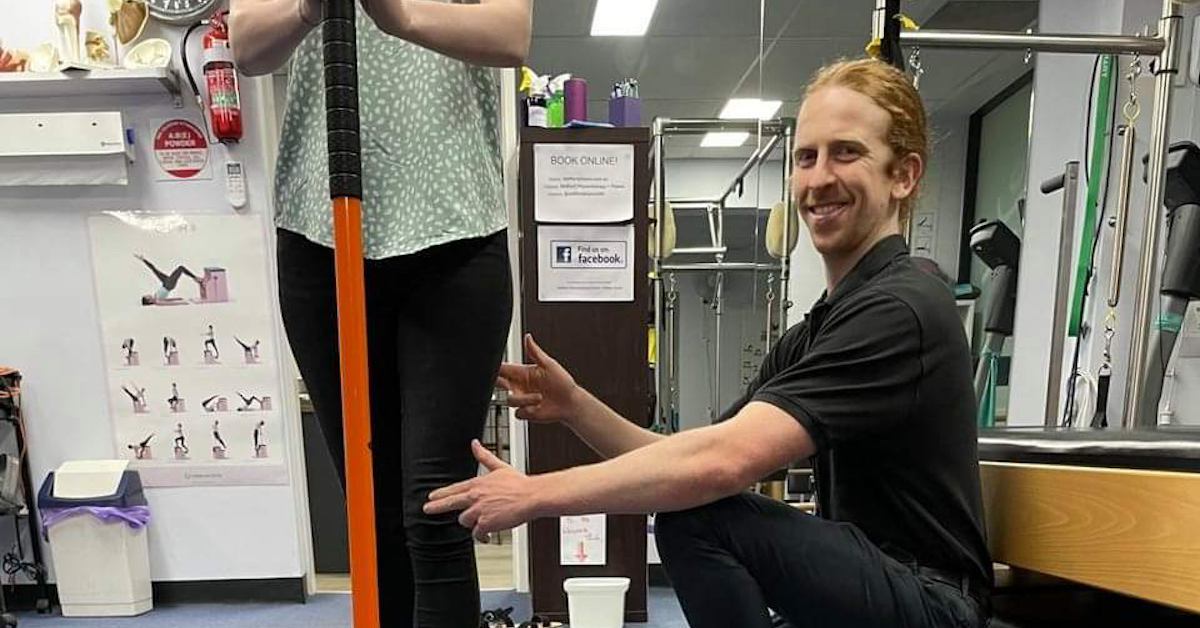
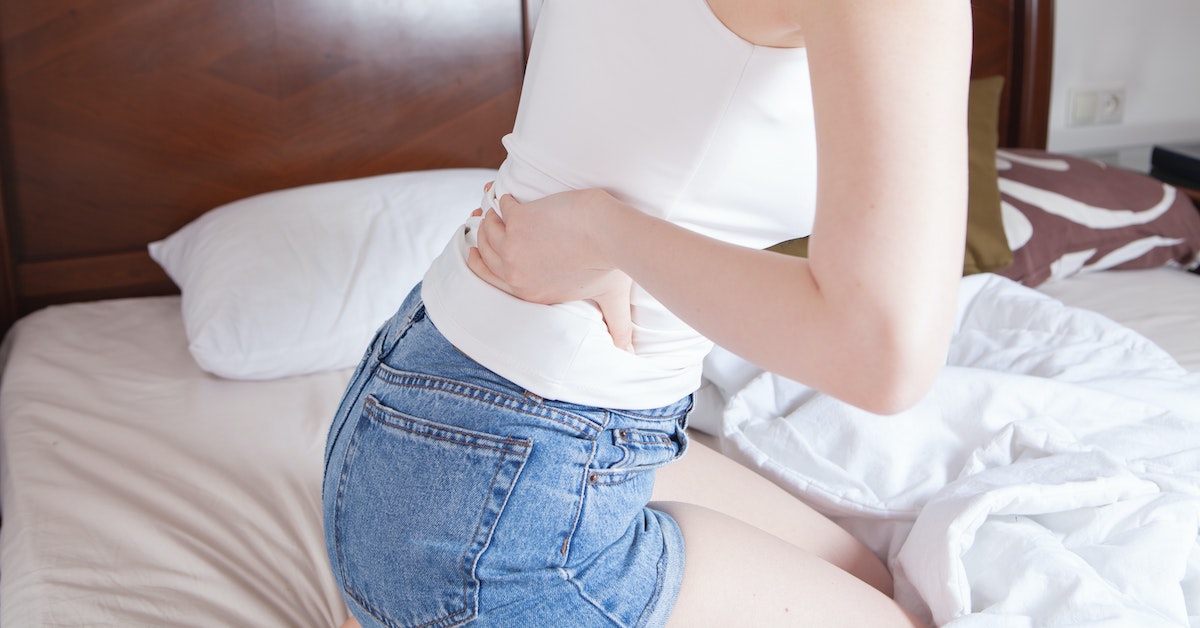
 1. Cobra pose
1. Cobra pose 2. Archer stretch
2. Archer stretch  3. Child’s pose
3. Child’s pose

 5. Roller Thoracic extension
5. Roller Thoracic extension 6. Thoracic rotation with stick
6. Thoracic rotation with stick 7. Thoracic side bends with stick
7. Thoracic side bends with stick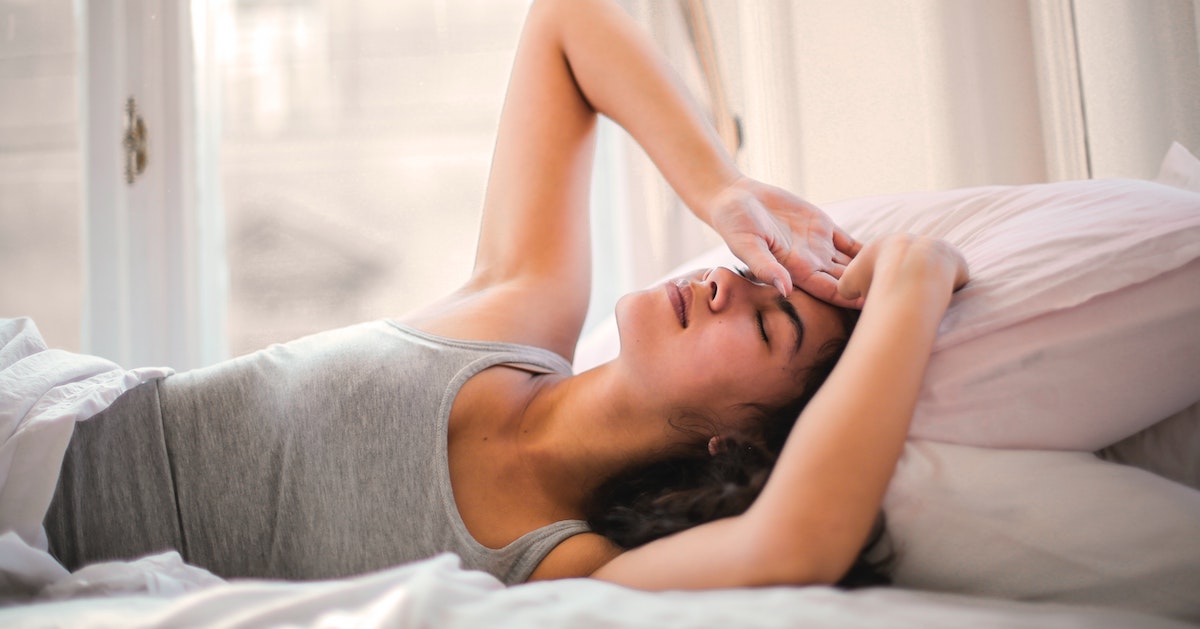
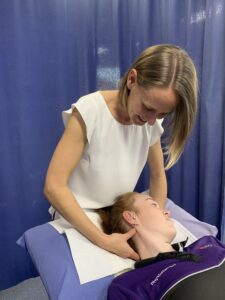
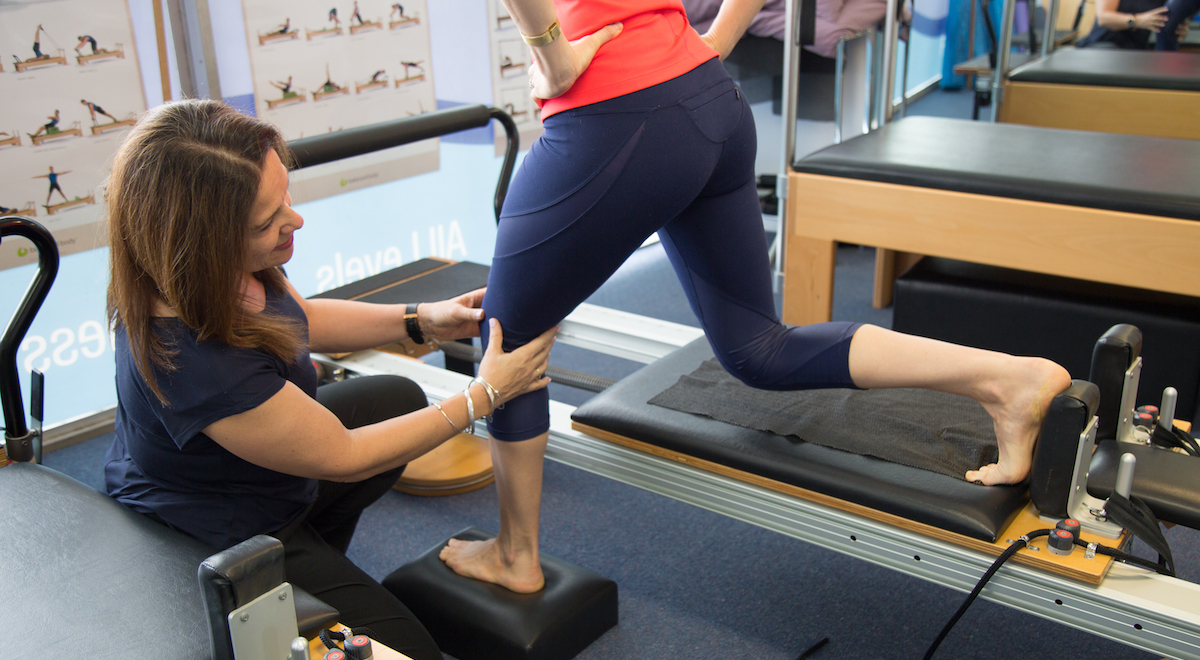
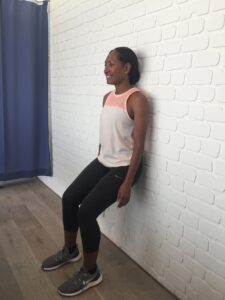 < Wall squat
< Wall squat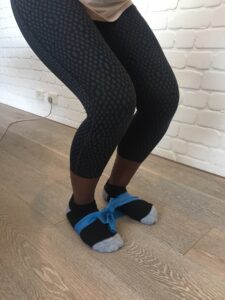 Mini squat with band >
Mini squat with band >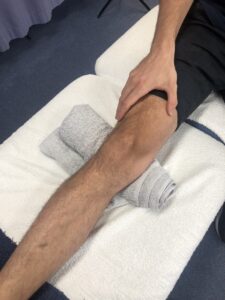 < Knee extensions over a towel
< Knee extensions over a towel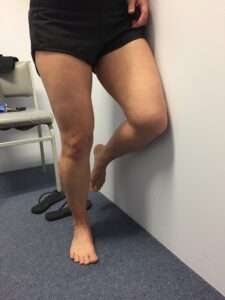 Wall stand >
Wall stand >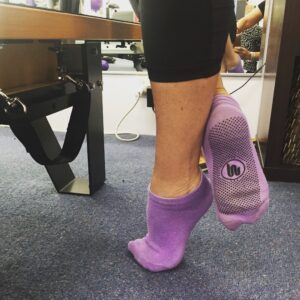 Calf raises >
Calf raises > < Foot doming
< Foot doming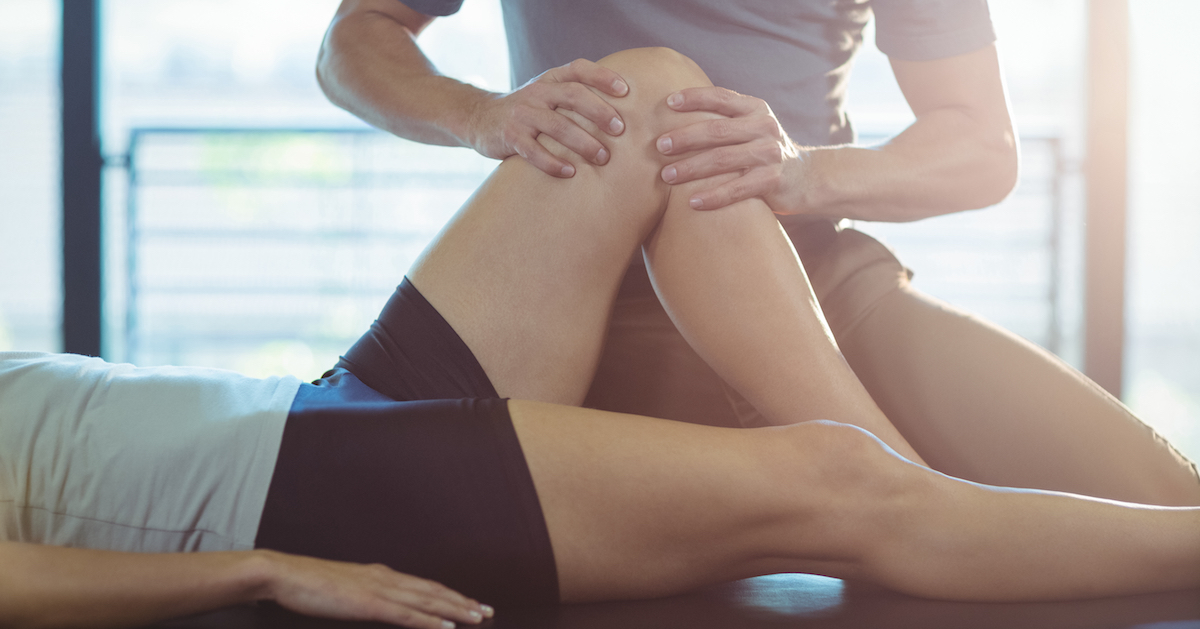


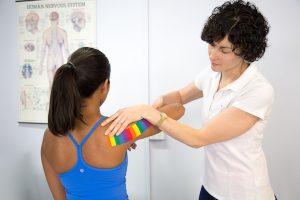 Lucy has an impressive skillset with a Bachelor of Physiotherapy, a Masters of Sports Physiotherapy and further study in dry needling, muscle energy techniques, running biomechanics, kinesiology, taping, diagnostic ultrasound, strength and conditioning coaching, and sports rehabilitation. Read more about Lucy
Lucy has an impressive skillset with a Bachelor of Physiotherapy, a Masters of Sports Physiotherapy and further study in dry needling, muscle energy techniques, running biomechanics, kinesiology, taping, diagnostic ultrasound, strength and conditioning coaching, and sports rehabilitation. Read more about Lucy 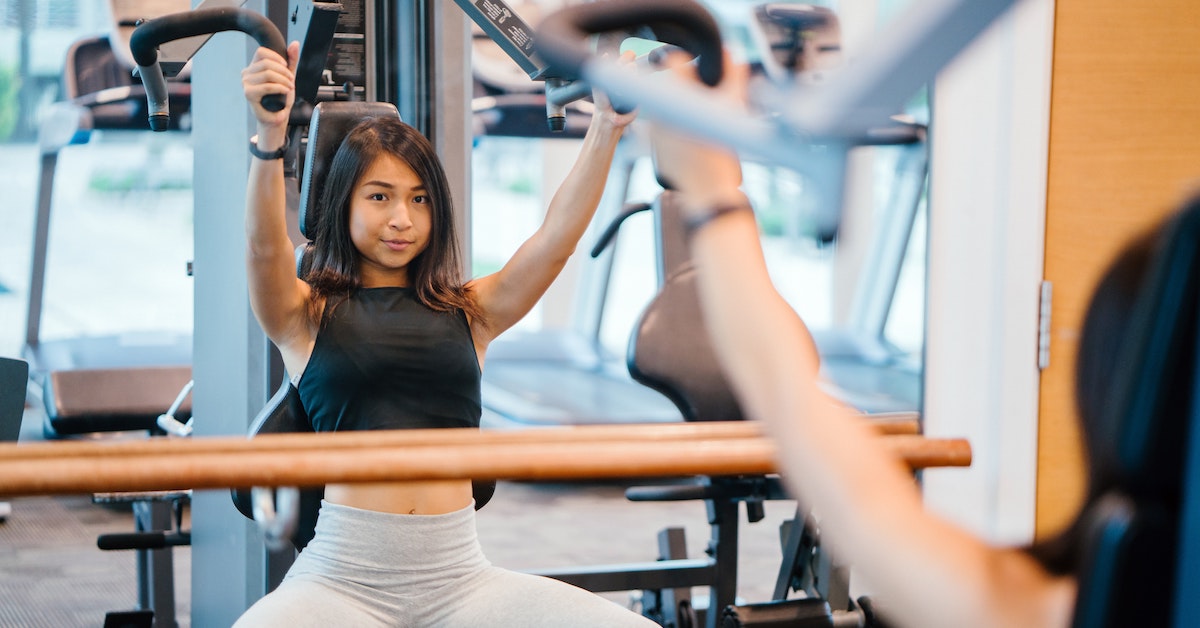
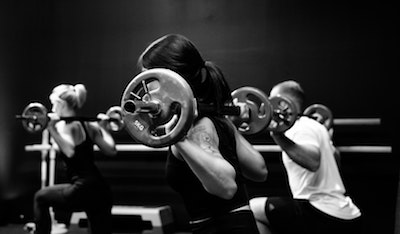
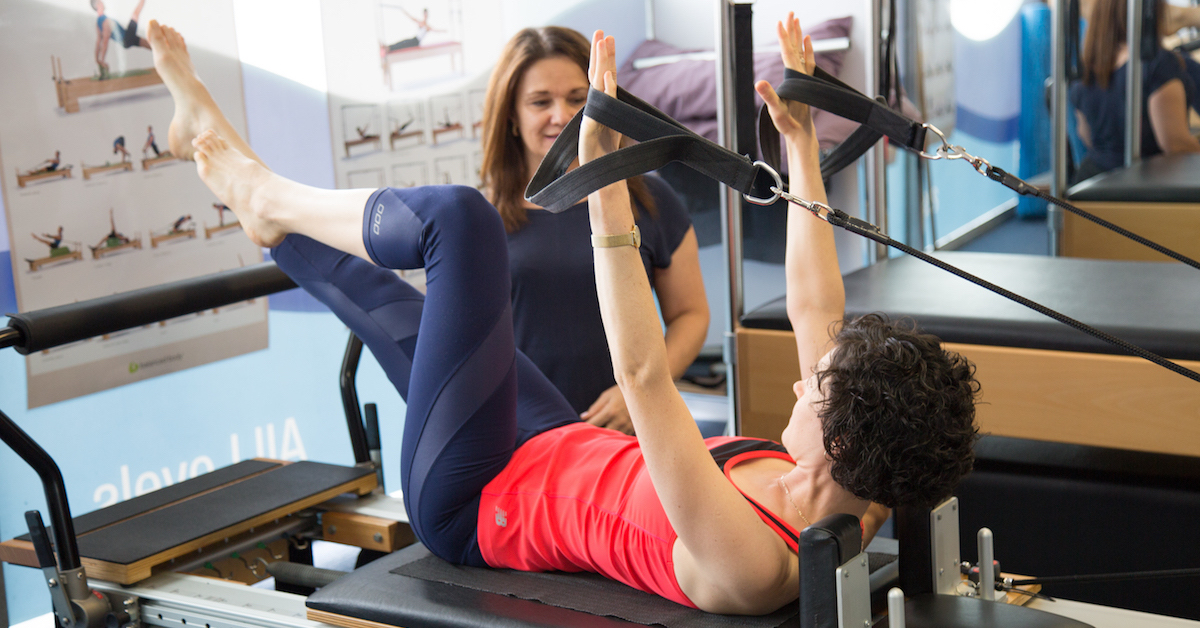
 PHYSIOTHERAPY APPOINTMENTS
PHYSIOTHERAPY APPOINTMENTS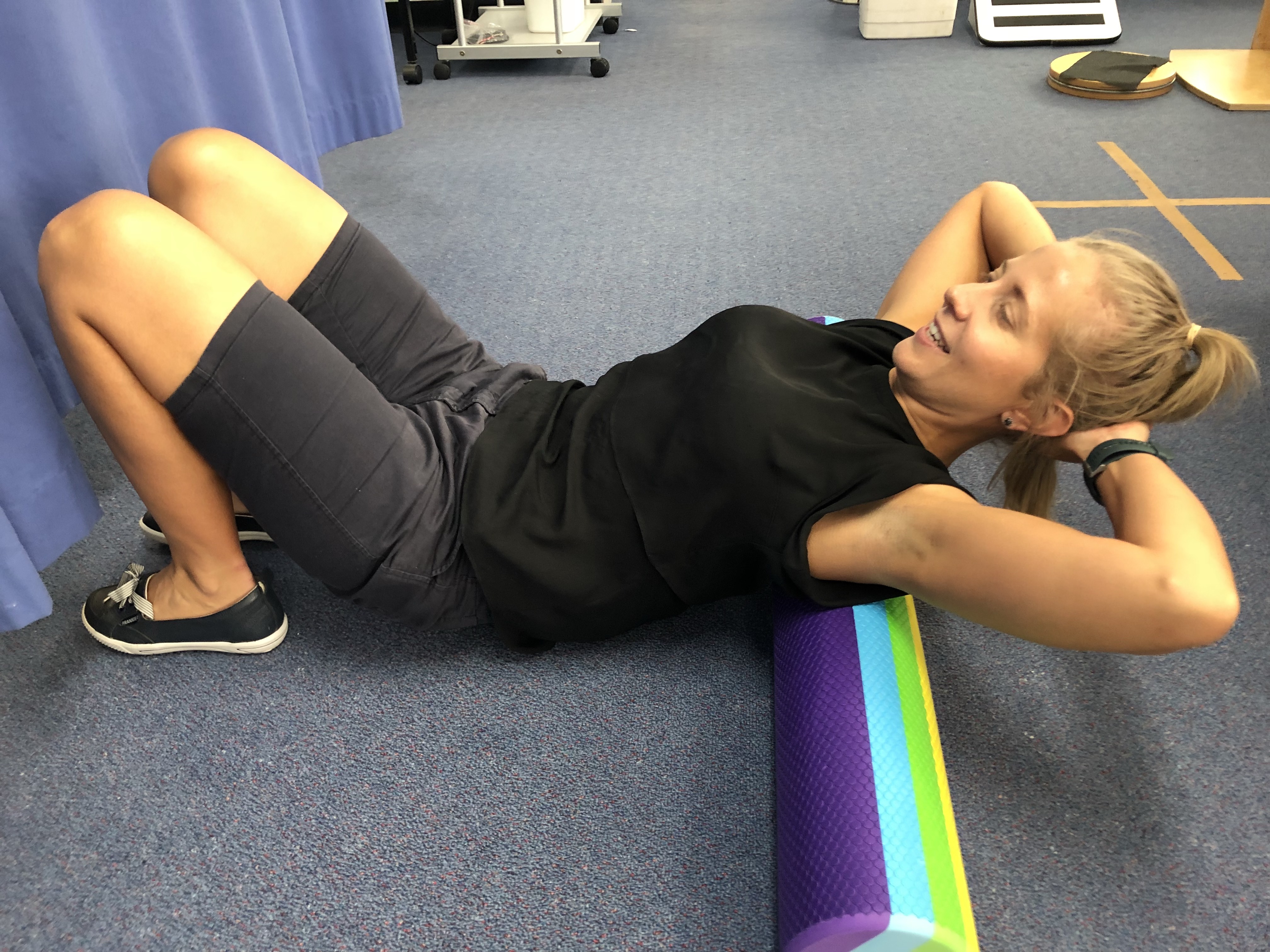
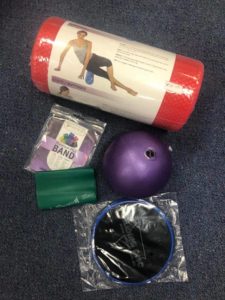 Do you want to exercise at home and need some equipment? We have full (long) rollers, short rollers, exercise balls, chi balls, sliders, exercise resistance bands (plus handles if needed), hand stress balls and exercise DVDs. We sell these!
Do you want to exercise at home and need some equipment? We have full (long) rollers, short rollers, exercise balls, chi balls, sliders, exercise resistance bands (plus handles if needed), hand stress balls and exercise DVDs. We sell these!